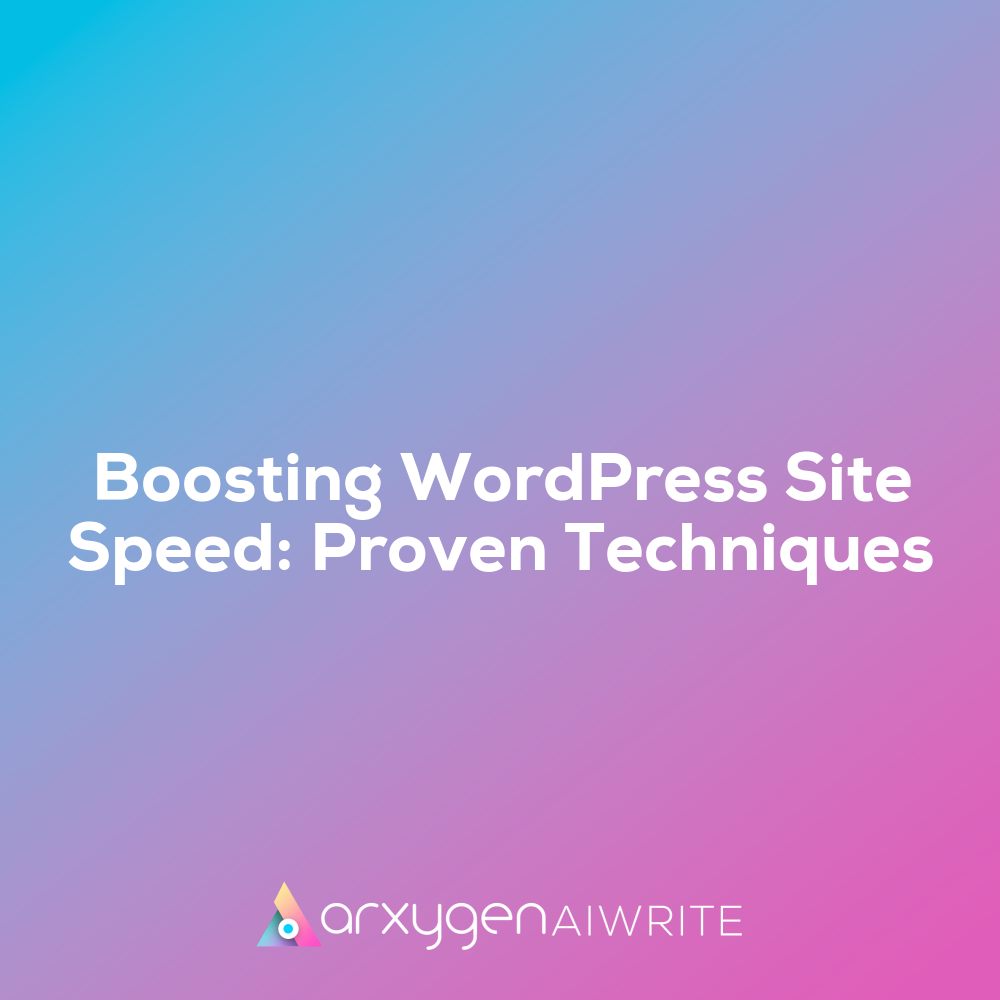Effective Strategies for Improving WordPress Site Speed
Optimising images is one of the most impactful techniques for enhancing your WordPress site’s performance. Large image files can significantly slow down load times, frustrating visitors. By compressing images without sacrificing quality, you not only improve speed but also enhance user experience. Additionally, implementing lazy loading ensures that images are only loaded when they enter the viewport. This means that users won’t have to wait for all images to load at once, leading to a smoother browsing experience.
The Power of Caching Plugins in WordPress Speed Optimisation
Caching plugins are another essential tool for reducing load times. These plugins create static versions of your site, allowing visitors to access content more quickly. Instead of generating a page dynamically with each request, caching serves pre-loaded content, which can drastically decrease server response times. When combined with image optimisation and lazy loading, caching can transform a sluggish site into a lightning-fast platform.
Imagine a potential customer landing on your site, eager to explore your offerings. If your pages load slowly, they might leave before engaging with your content. By prioritising speed through these techniques, you not only keep visitors on your site longer but also improve your chances of conversion. Adopting these strategies can lead to higher search engine rankings as well, since site speed is a crucial factor in SEO.
Incorporating these proven methods into your website management routine can lead to significant improvements in performance. With tools like image optimisation and caching plugins at your disposal, enhancing your WordPress site’s speed is not just achievable; it’s essential for success.
Regular Updates for Optimal Site Performance
Maintaining a fast WordPress site requires more than just initial setup; it demands ongoing attention. Regular updates for themes and plugins are crucial. Outdated components can slow your site significantly, making it essential to keep everything current. Think of it as tuning a high-performance car – without regular maintenance, it won’t run smoothly.
“Regular updates for themes and plugins are crucial. Outdated components can slow your site significantly, making it essential to keep everything current.”
Tools to Monitor Your Site’s Speed
To ensure your site remains speedy, consider using monitoring tools. These can help track performance over time and identify issues before they escalate. Tools like Google PageSpeed Insights and GTmetrix provide valuable insights into loading times and optimisation opportunities.
- Use caching plugins to enhance load speeds.
- Regularly delete unused themes and plugins.
- Optimise images to reduce file size without losing quality.
- Implement a Content Delivery Network (CDN) for faster delivery.
- Minimise HTTP requests by combining files.
- Enable Gzip compression for quicker data transfer.
- Monitor uptime to ensure your site is always accessible.
- Review and update your hosting plan as needed.
By prioritising these practices, you’ll not only boost your site’s speed but also enhance user experience and search engine rankings.

